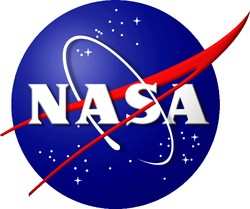Tue, Jun 21, 2016
Awarding About $8 Million To 11 Schools Nationwide
NASA is awarding approximately $8 million to 11 schools across the country for research and technology development projects in areas critical to the agency’s mission.

The Experimental Program to Stimulate Competitive Research (EPSCoR) program supports science and technology research and development at colleges and universities in areas, such as remote sensing, nanotechnology, astrophysics and aeronautics. All of these are applicable to NASA’s work in Earth science, aeronautics, and human and robotic deep space exploration. The schools will receive as much as $750,000 each for work during a three-year period.
Results from the research will be given back to NASA where it may be used as part of ongoing agency work.
The awardees and the title of their winning proposals are:
- University Of Alaska, Fairbanks: Development and Characterization of a New Hybrid Polymer-Nanoparticle Composite Coating for Corrosion Protection in Aerospace Applications
- Wichita State University, Kansas: Novel Smart Skin Biomedical Sensor for Monitoring Crew Health Parameters in a Wireless, Passive, Lightweight, Robust, and Non-invasive Fashion
- Maine Space Grant Consortium, Augusta: Multi- and hyperspectral bio-optical identification and tracking of Gulf of Maine water masses and harmful algal bloom habitat
- Louisiana Board Of Regents, Baton Rouge: Damage Healing of Polymer Composite Structures under Service Conditions
- University Of Oklahoma, Norman: High Efficiency Dilute Nitrides Solar Cells for Space Applications
- Brown University, Providence, Rhode Island: Testing New Methods to Assess the Environmental and Floral/Faunal responses to Impacts on Earth
- University Of Alabama, Huntsville: Development of Dust Free Binders for Spacecraft Air Revitalization Systems
- University Of Vermont, Burlington: Characterization and modeling of biofilm development by a model multi-species ISS bacterial community
- College of Charleston, South Carolina: Temporal and Spatial Variability of Floodplain Currents by In-Situ Observations, Radar Interferometry and Numerical Simulations
- South Dakota School Of Mines & Technology, Rapid City: Advanced Bioelectrochemical Module (BEM) for Waste-to-Electricity Generation during Long-term Space Exploration
- University Of Wyoming, Laramie: Experimental and numerical investigation of terrestrial stable cool flames for improved understanding of International Space Station droplet combustion experiments.
(Source: NASA news release)
More News
“We have seen astounding demand for the G800, and the entire Gulfstream team is excited to begin making deliveries to our customers. The G800 is entering service with extraor>[...]
Aero Linx: Recreational Aviation Australia (RAAus) Recreational Aviation Australia is progressively working towards improving safety outcomes through a holistic approach to safety >[...]
Classic Klyde Morris From 11.07.16 (and Remembering Bob...) FMI: www.klydemorris.com>[...]
Also: GADFLY AI-Driven Engine Analysis, Knockoff Iranian Drones, Russian Surveillance, 40 NASA Missions Chopped This year’s Zenith Homecoming event will soon be taking off at>[...]
Also: H55 Completes American Tour, Robinson Trade-Ins, Retired AV-8B Harrier, NS-35 Mission Organizers of the iconic annual Air Race Classic will soon be opening registration for t>[...]
 Aero-News: Quote of the Day (08.28.25)
Aero-News: Quote of the Day (08.28.25) ANN's Daily Aero-Linx (08.28.25)
ANN's Daily Aero-Linx (08.28.25) Classic Klyde Morris (08.25.25)
Classic Klyde Morris (08.25.25) Airborne 08.25.25: Zenith Homecoming, VP Racing, Affordable Flying Expo 2025
Airborne 08.25.25: Zenith Homecoming, VP Racing, Affordable Flying Expo 2025 Airborne 08.22.25: ARC Spinoff, Nat'l Championship Air Races, Hawkins Accident
Airborne 08.22.25: ARC Spinoff, Nat'l Championship Air Races, Hawkins Accident



